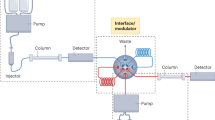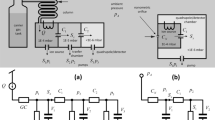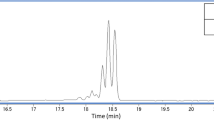Abstract
NORMAL chromatograms of wide-range samples obtained under constant column inlet and outlet pressures give high narrow peaks and low wide peaks at short and long retention times respectively for equal concentrations; this observation is the basis of the theoretical plate value calculation. At longer retention times there is a risk of compounds remaining undetected. Temperature programming has been used to minimize this risk and enables wider range samples to be analysed; this technique also tends to equalize peak widths.
Similar content being viewed by others
Article PDF
Author information
Authors and Affiliations
Rights and permissions
About this article
Cite this article
CLARKE, S. Pressure-programmed Gas-liquid Partition Chromatography. Nature 202, 1106 (1964). https://doi.org/10.1038/2021106a0
Issue Date:
DOI: https://doi.org/10.1038/2021106a0
This article is cited by
-
Gas chromatography with programming the mobile phase flow rate
Chromatographia (1979)
Comments
By submitting a comment you agree to abide by our Terms and Community Guidelines. If you find something abusive or that does not comply with our terms or guidelines please flag it as inappropriate.



